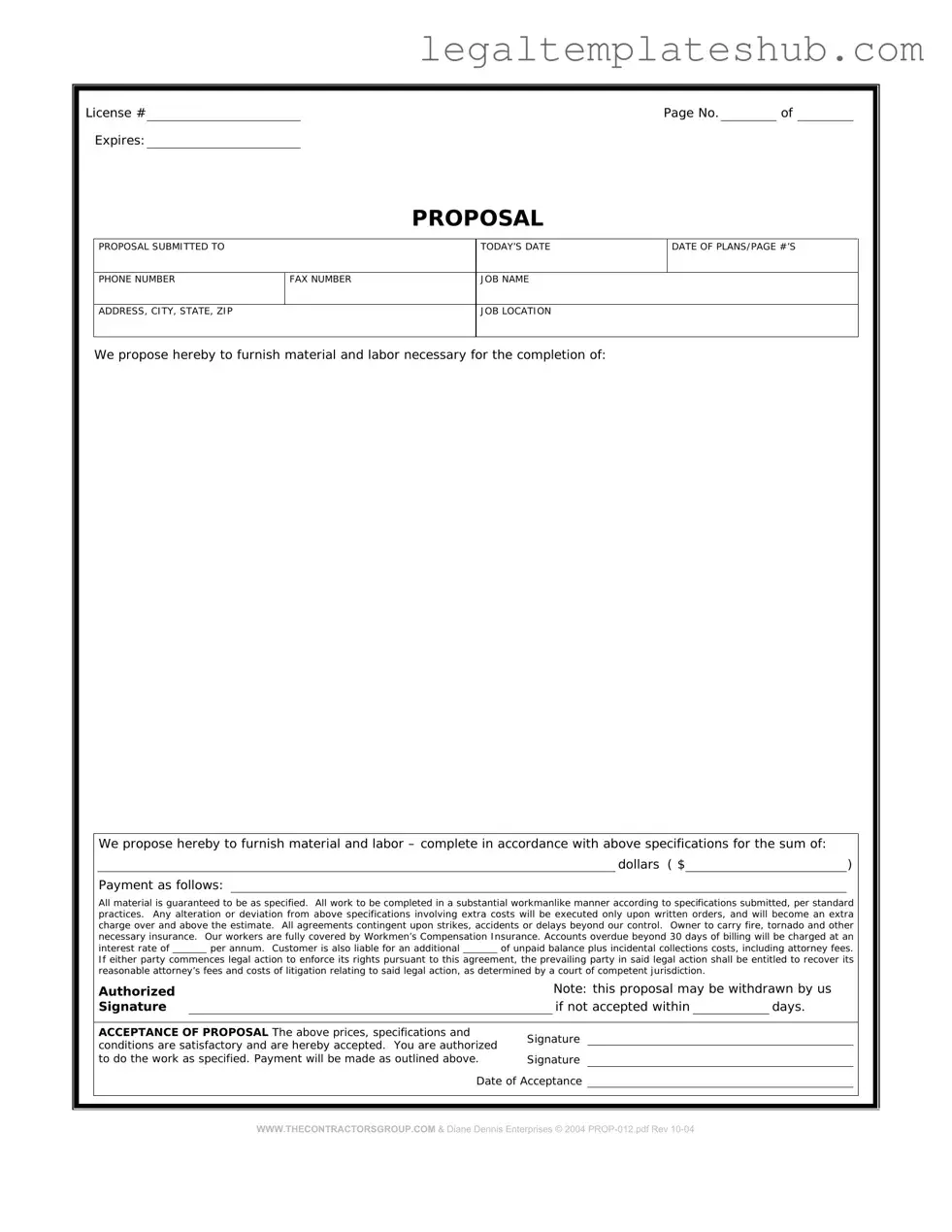Blank Construction proposal form PDF Form
The Construction Proposal Form is a document used by contractors to outline the scope, costs, and timeline of a construction project. This form serves as a formal proposal to clients, detailing the services offered and providing a clear understanding of project expectations. To get started on your construction project, fill out the form by clicking the button below.
Access Editor
